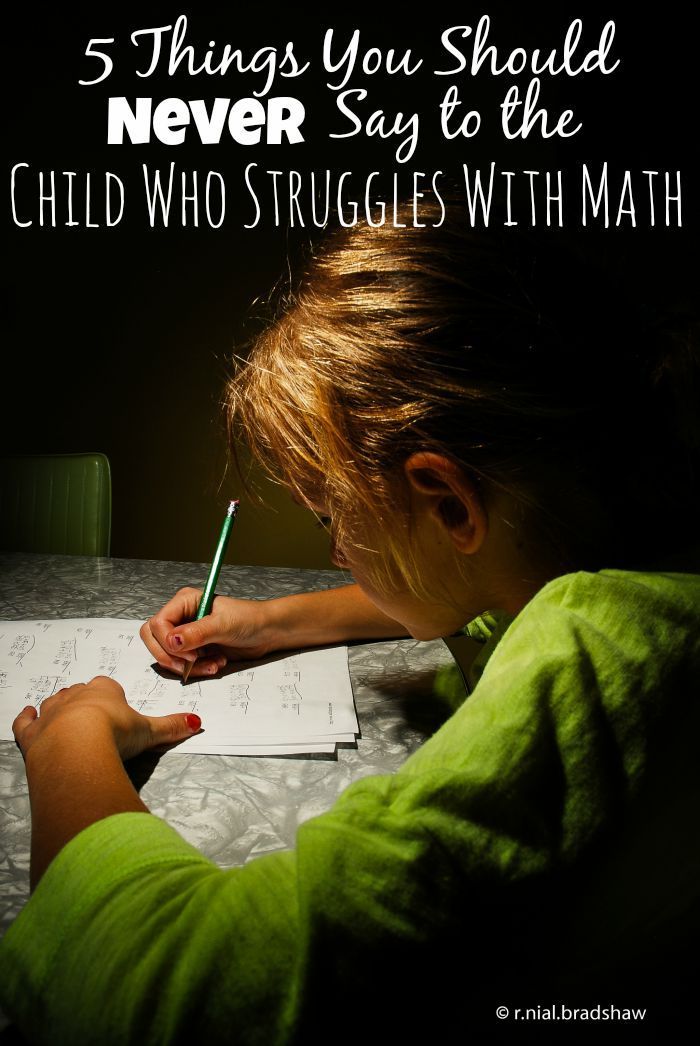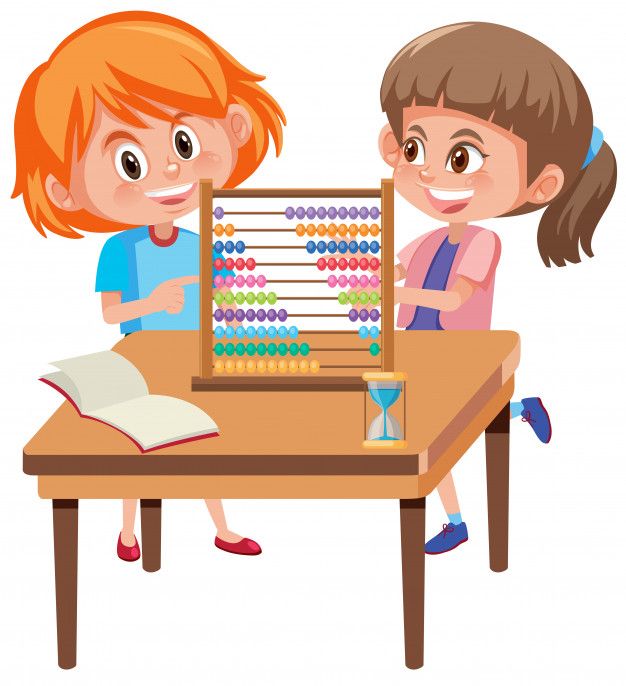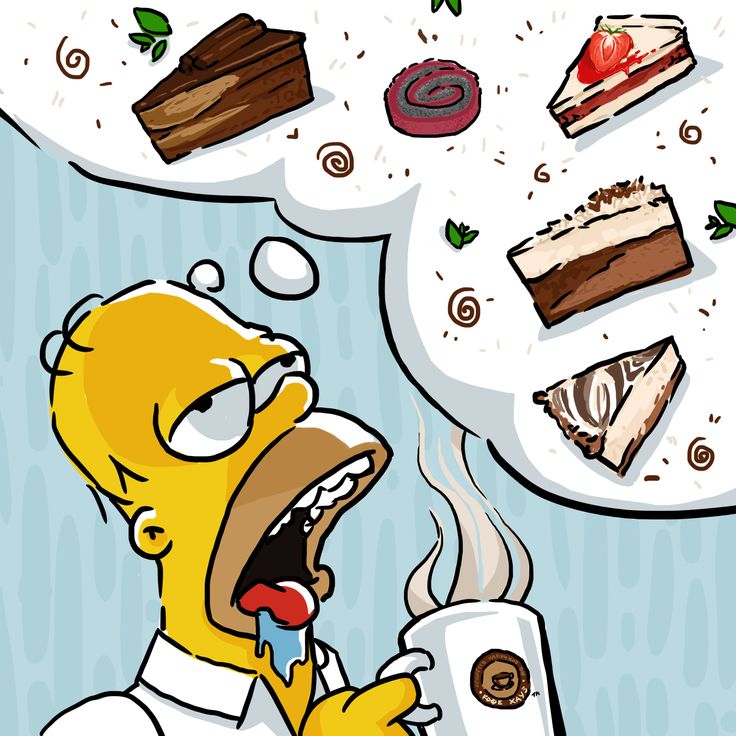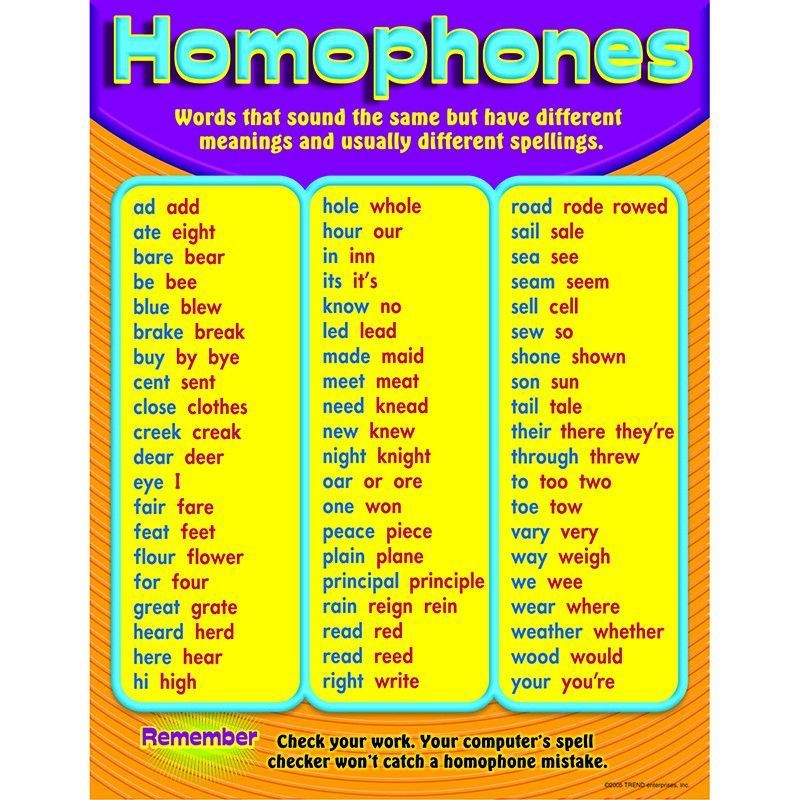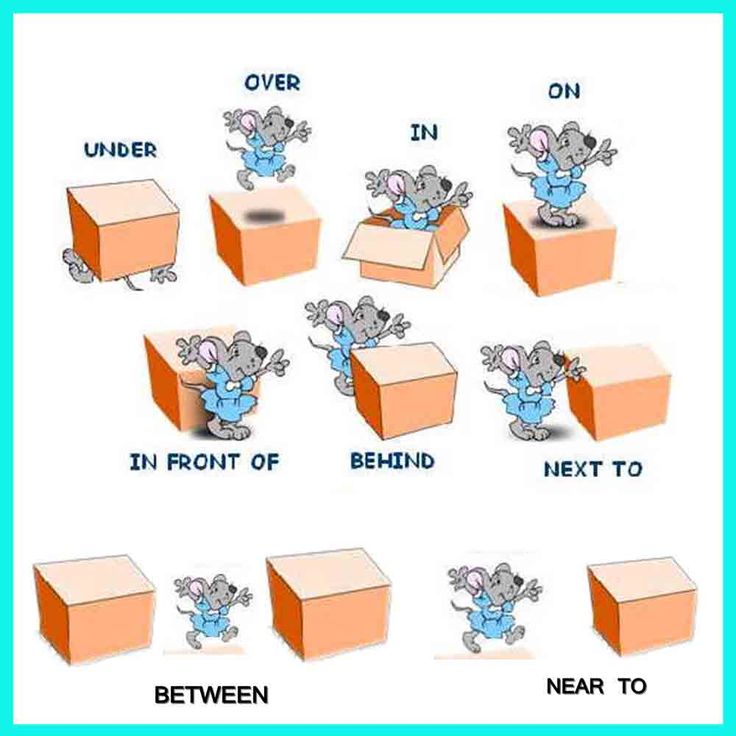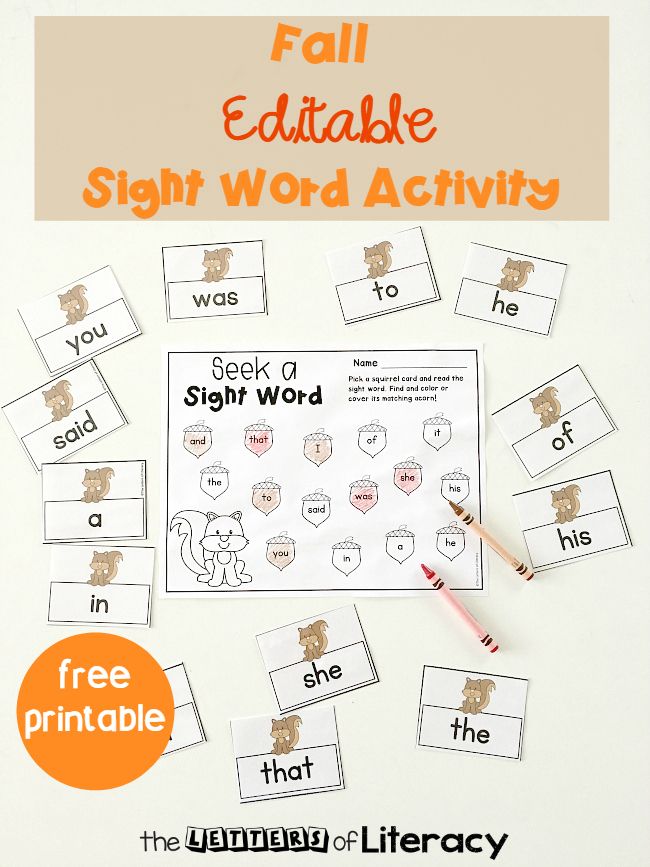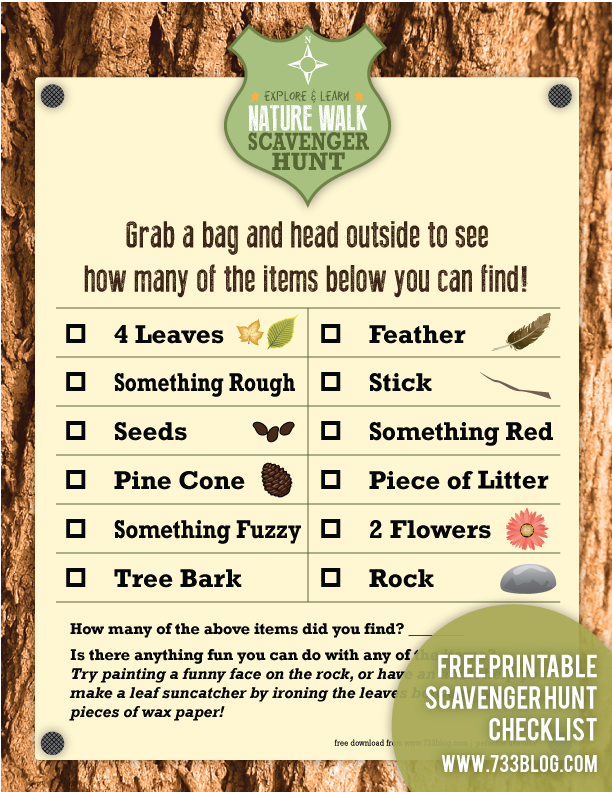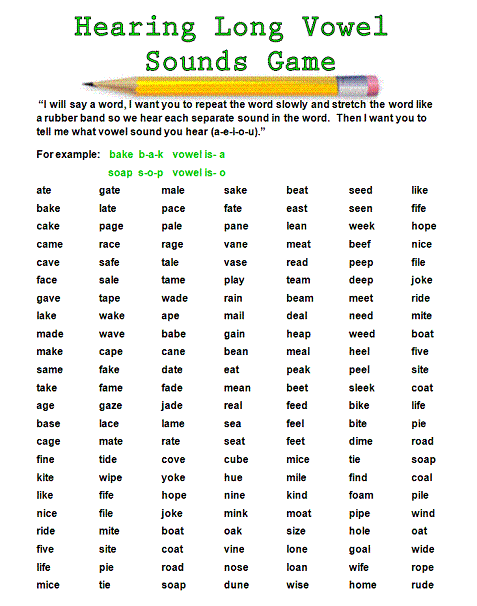Child learning math
Help Your Child Develop Early Math Skills
Before they start school, most children develop an understanding of addition and subtraction through everyday interactions. Learn what informal activities give children a head start on early math skills when they start school.
Children are using early math skills throughout their daily routines and activities. This is good news as these skills are important for being ready for school. But early math doesn’t mean taking out the calculator during playtime. Even before they start school, most children develop an understanding of addition and subtraction through everyday interactions. For example, Thomas has two cars; Joseph wants one. After Thomas shares one, he sees that he has one car left (Bowman, Donovan, & Burns, 2001, p. 201). Other math skills are introduced through daily routines you share with your child—counting steps as you go up or down, for example. Informal activities like this one give children a jumpstart on the formal math instruction that starts in school.
What math knowledge will your child need later on in elementary school? Early mathematical concepts and skills that first-grade mathematics curriculum builds on include: (Bowman et al., 2001, p. 76).
- Understanding size, shape, and patterns
- Ability to count verbally (first forward, then backward)
- Recognizing numerals
- Identifying more and less of a quantity
- Understanding one-to-one correspondence (i.e., matching sets, or knowing which group has four and which has five)
Key Math Skills for School
More advanced mathematical skills are based on an early math “foundation”—just like a house is built on a strong foundation. In the toddler years, you can help your child begin to develop early math skills by introducing ideas like: (From Diezmann & Yelland, 2000, and Fromboluti & Rinck, 1999.)
Number Sense
This is the ability to count accurately—first forward. Then, later in school, children will learn to count backwards.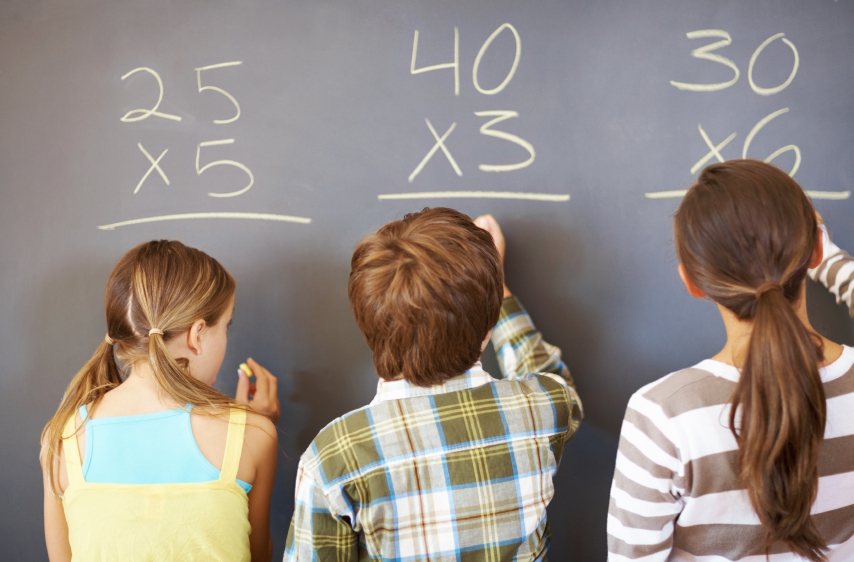 A more complex skill related to number sense is the ability to see relationships between numbers—like adding and subtracting. Ben (age 2) saw the cupcakes on the plate. He counted with his dad: “One, two, three, four, five, six…”
A more complex skill related to number sense is the ability to see relationships between numbers—like adding and subtracting. Ben (age 2) saw the cupcakes on the plate. He counted with his dad: “One, two, three, four, five, six…”
Representation
Making mathematical ideas “real” by using words, pictures, symbols, and objects (like blocks). Casey (aged 3) was setting out a pretend picnic. He carefully laid out four plastic plates and four plastic cups: “So our whole family can come to the picnic!” There were four members in his family; he was able to apply this information to the number of plates and cups he chose.
Spatial sense
Later in school, children will call this “geometry.” But for toddlers it is introducing the ideas of shape, size, space, position, direction and movement. Aziz (28 months) was giggling at the bottom of the slide. “What’s so funny?” his Auntie wondered. “I comed up,” said Aziz, “Then I comed down!”
Measurement
Technically, this is finding the length, height, and weight of an object using units like inches, feet or pounds.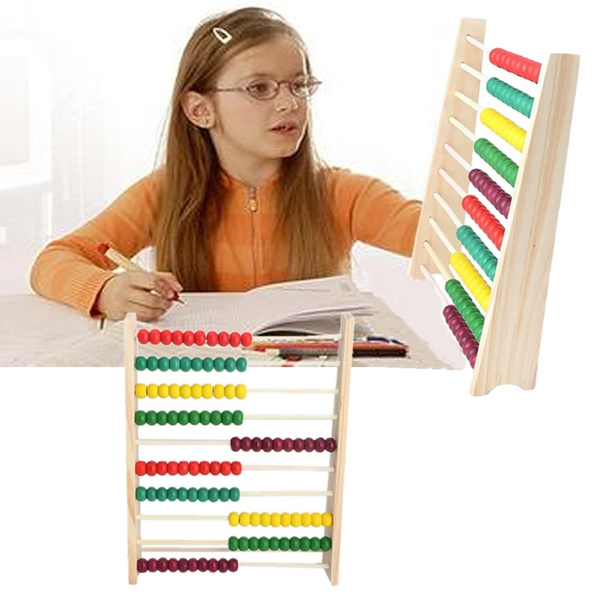 Measurement of time (in minutes, for example) also falls under this skill area. Gabriella (36 months) asked her Abuela again and again: “Make cookies? Me do it!” Her Abuela showed her how to fill the measuring cup with sugar. “We need two cups, Gabi. Fill it up once and put it in the bowl, then fill it up again.”
Measurement of time (in minutes, for example) also falls under this skill area. Gabriella (36 months) asked her Abuela again and again: “Make cookies? Me do it!” Her Abuela showed her how to fill the measuring cup with sugar. “We need two cups, Gabi. Fill it up once and put it in the bowl, then fill it up again.”
Estimation
This is the ability to make a good guess about the amount or size of something. This is very difficult for young children to do. You can help them by showing them the meaning of words like more, less, bigger, smaller, more than, less than. Nolan (30 months) looked at the two bagels: one was a regular bagel, one was a mini-bagel. His dad asked: “Which one would you like?” Nolan pointed to the regular bagel. His dad said, “You must be hungry! That bagel is bigger. That bagel is smaller. Okay, I’ll give you the bigger one. Breakfast is coming up!”
Patterns
Patterns are things—numbers, shapes, images—that repeat in a logical way. Patterns help children learn to make predictions, to understand what comes next, to make logical connections, and to use reasoning skills. Ava (27 months) pointed to the moon: “Moon. Sun go night-night.” Her grandfather picked her up, “Yes, little Ava. In the morning, the sun comes out and the moon goes away. At night, the sun goes to sleep and the moon comes out to play. But it’s time for Ava to go to sleep now, just like the sun.”
Patterns help children learn to make predictions, to understand what comes next, to make logical connections, and to use reasoning skills. Ava (27 months) pointed to the moon: “Moon. Sun go night-night.” Her grandfather picked her up, “Yes, little Ava. In the morning, the sun comes out and the moon goes away. At night, the sun goes to sleep and the moon comes out to play. But it’s time for Ava to go to sleep now, just like the sun.”
Problem-solving
The ability to think through a problem, to recognize there is more than one path to the answer. It means using past knowledge and logical thinking skills to find an answer. Carl (15 months old) looked at the shape-sorter—a plastic drum with 3 holes in the top. The holes were in the shape of a triangle, a circle and a square. Carl looked at the chunky shapes on the floor. He picked up a triangle. He put it in his month, then banged it on the floor. He touched the edges with his fingers. Then he tried to stuff it in each of the holes of the new toy.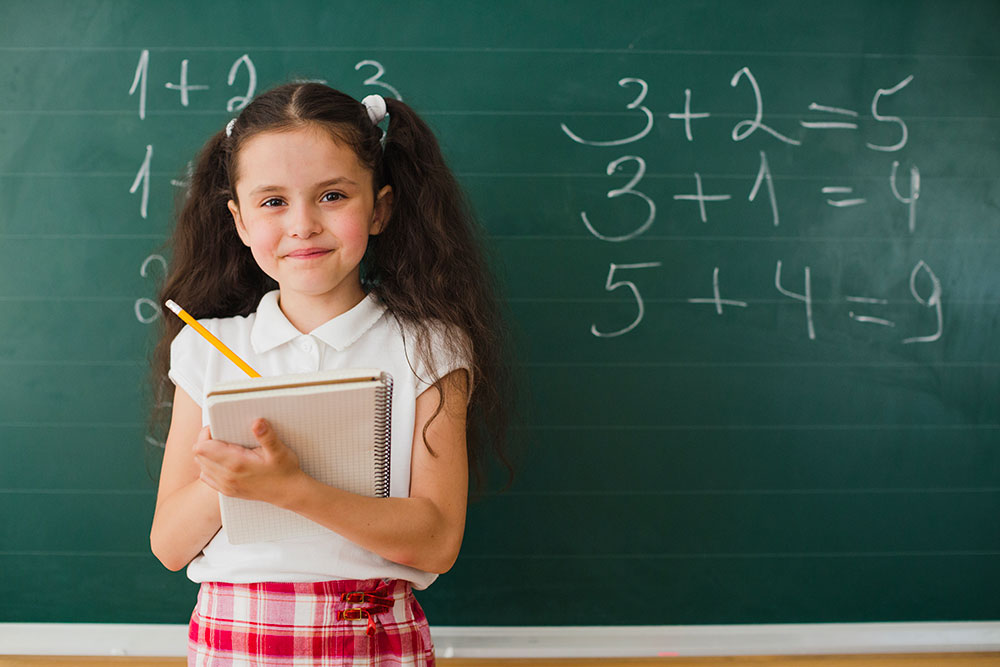 Surprise! It fell inside the triangle hole! Carl reached for another block, a circular one this time…
Surprise! It fell inside the triangle hole! Carl reached for another block, a circular one this time…
Math: One Part of the Whole
Math skills are just one part of a larger web of skills that children are developing in the early years—including language skills, physical skills, and social skills. Each of these skill areas is dependent on and influences the others.
Trina (18 months old) was stacking blocks. She had put two square blocks on top of one another, then a triangle block on top of that. She discovered that no more blocks would balance on top of the triangle-shaped block. She looked up at her dad and showed him the block she couldn’t get to stay on top, essentially telling him with her gesture, “Dad, I need help figuring this out.” Her father showed her that if she took the triangle block off and used a square one instead, she could stack more on top. She then added two more blocks to her tower before proudly showing her creation to her dad: “Dada, Ook! Ook!”
You can see in this ordinary interaction how all areas of Trina’s development are working together.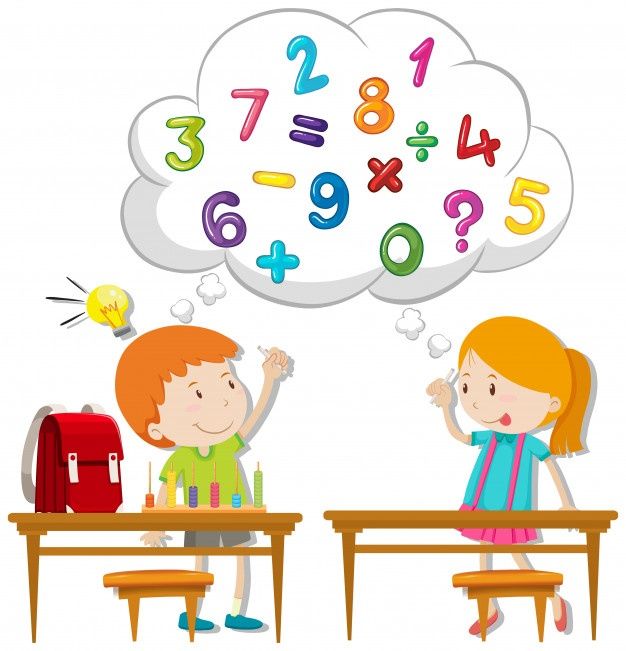 Her physical ability allows her to manipulate the blocks and use her thinking skills to execute her plan to make a tower. She uses her language and social skills as she asks her father for help. Her effective communication allows Dad to respond and provide the helps she needs (further enhancing her social skills as she sees herself as important and a good communicator). This then further builds her thinking skills as she learns how to solve the problem of making the tower taller.
Her physical ability allows her to manipulate the blocks and use her thinking skills to execute her plan to make a tower. She uses her language and social skills as she asks her father for help. Her effective communication allows Dad to respond and provide the helps she needs (further enhancing her social skills as she sees herself as important and a good communicator). This then further builds her thinking skills as she learns how to solve the problem of making the tower taller.
What You Can Do
The tips below highlight ways that you can help your child learn early math skills by building on their natural curiosity and having fun together. (Note: Most of these tips are designed for older children—ages 2–3. Younger children can be exposed to stories and songs using repetition, rhymes and numbers.)
Shape up.
Play with shape-sorters. Talk with your child about each shape—count the sides, describe the colors. Make your own shapes by cutting large shapes out of colored construction paper. Ask your child to “hop on the circle” or “jump on the red shape.”
Ask your child to “hop on the circle” or “jump on the red shape.”
Count and sort.
Gather together a basket of small toys, shells, pebbles or buttons. Count them with your child. Sort them based on size, color, or what they do (i.e., all the cars in one pile, all the animals in another).
Place the call.
With your 3-year-old, begin teaching her the address and phone number of your home. Talk with your child about how each house has a number, and how their house or apartment is one of a series, each with its own number.
What size is it?
Notice the sizes of objects in the world around you: That pink pocketbook is the biggest. The blue pocketbook is the smallest. Ask your child to think about his own size relative to other objects (“Do you fit under the table? Under the chair?”).
You’re cookin’ now!
Even young children can help fill, stir, and pour. Through these activities, children learn, quite naturally, to count, measure, add, and estimate.
Walk it off.
Taking a walk gives children many opportunities to compare (which stone is bigger?), assess (how many acorns did we find?), note similarities and differences (does the duck have fur like the bunny does?) and categorize (see if you can find some red leaves). You can also talk about size (by taking big and little steps), estimate distance (is the park close to our house or far away?), and practice counting (let’s count how many steps until we get to the corner).
Picture time.
Use an hourglass, stopwatch, or timer to time short (1–3 minute) activities. This helps children develop a sense of time and to understand that some things take longer than others.
Shape up.
Point out the different shapes and colors you see during the day. On a walk, you may see a triangle-shaped sign that’s yellow. Inside a store you may see a rectangle-shaped sign that’s red.
Read and sing your numbers.
Sing songs that rhyme, repeat, or have numbers in them. Songs reinforce patterns (which is a math skill as well). They also are fun ways to practice language and foster social skills like cooperation.
Songs reinforce patterns (which is a math skill as well). They also are fun ways to practice language and foster social skills like cooperation.
Start today.
Use a calendar to talk about the date, the day of the week, and the weather. Calendars reinforce counting, sequences, and patterns. Build logical thinking skills by talking about cold weather and asking your child: What do we wear when it’s cold? This encourages your child to make the link between cold weather and warm clothing.
Pass it around.
Ask for your child’s help in distributing items like snacks or in laying napkins out on the dinner table. Help him give one cracker to each child. This helps children understand one-to-one correspondence. When you are distributing items, emphasize the number concept: “One for you, one for me, one for Daddy.” Or, “We are putting on our shoes: One, two.”
Big on blocks.
Give your child the chance to play with wooden blocks, plastic interlocking blocks, empty boxes, milk cartons, etc.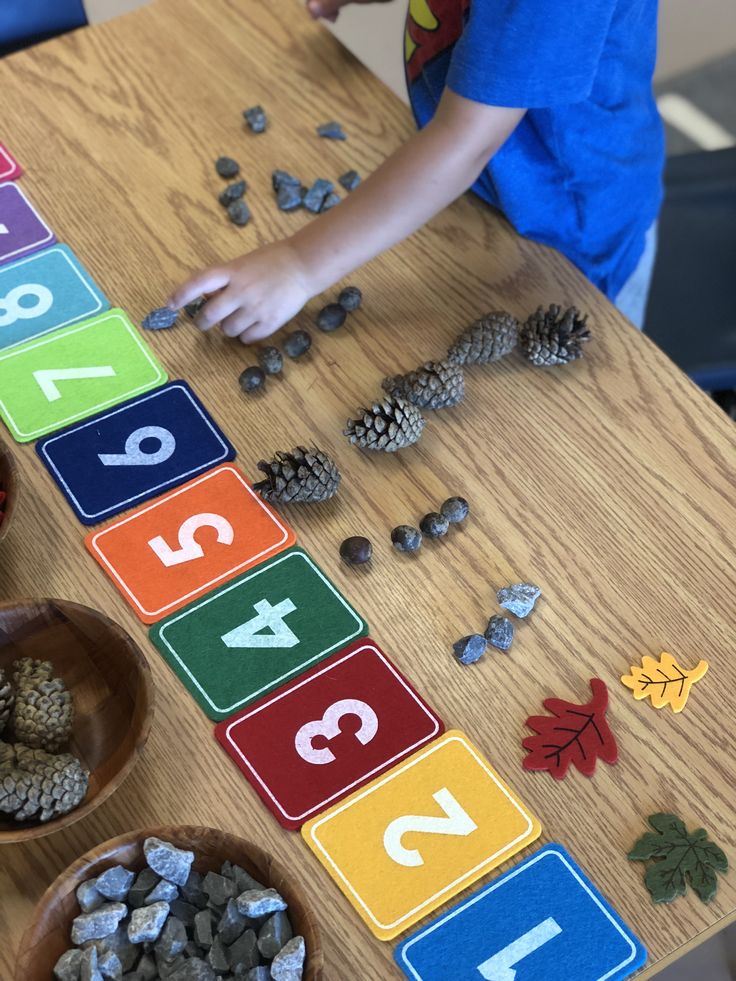 Stacking and manipulating these toys help children learn about shapes and the relationships between shapes (e.g., two triangles make a square). Nesting boxes and cups for younger children help them understand the relationship between different sized objects.
Stacking and manipulating these toys help children learn about shapes and the relationships between shapes (e.g., two triangles make a square). Nesting boxes and cups for younger children help them understand the relationship between different sized objects.
Tunnel time.
Open a large cardboard box at each end to turn it into a tunnel. This helps children understand where their body is in space and in relation to other objects.
The long and the short of it.
Cut a few (3–5) pieces of ribbon, yarn or paper in different lengths. Talk about ideas like long and short. With your child, put in order of longest to shortest.
Learn through touch.
Cut shapes—circle, square, triangle—out of sturdy cardboard. Let your child touch the shape with her eyes open and then closed.
Pattern play.
Have fun with patterns by letting children arrange dry macaroni, chunky beads, different types of dry cereal, or pieces of paper in different patterns or designs. Supervise your child carefully during this activity to prevent choking, and put away all items when you are done.
Supervise your child carefully during this activity to prevent choking, and put away all items when you are done.
Laundry learning.
Make household jobs fun. As you sort the laundry, ask your child to make a pile of shirts and a pile of socks. Ask him which pile is the bigger (estimation). Together, count how many shirts. See if he can make pairs of socks: Can you take two socks out and put them in their own pile? (Don’t worry if they don’t match! This activity is more about counting than matching.)
Playground math.
As your child plays, make comparisons based on height (high/low), position (over/under), or size (big/little).
Dress for math success.
Ask your child to pick out a shirt for the day. Ask: What color is your shirt? Yes, yellow. Can you find something in your room that is also yellow? As your child nears three and beyond, notice patterns in his clothing—like stripes, colors, shapes, or pictures: I see a pattern on your shirt. There are stripes that go red, blue, red, blue.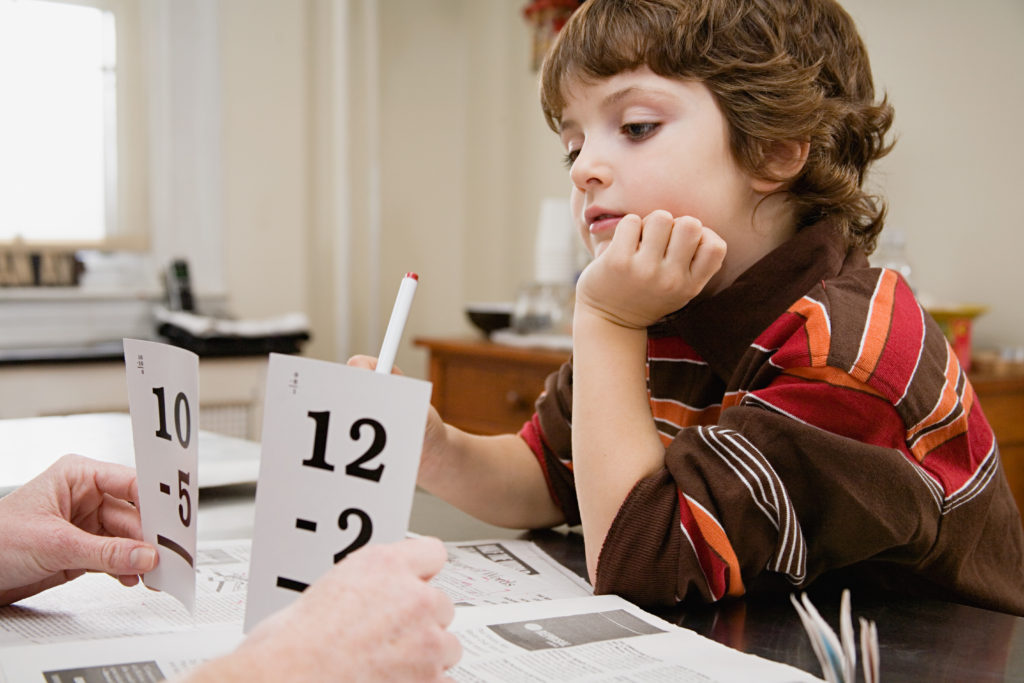 Or, Your shirt is covered with ponies—a big pony next to a little pony, all over your shirt!
Or, Your shirt is covered with ponies—a big pony next to a little pony, all over your shirt!
Graphing games.
As your child nears three and beyond, make a chart where your child can put a sticker each time it rains or each time it is sunny. At the end of a week, you can estimate together which column has more or less stickers, and count how many to be sure.
References
Bowman, B.T., Donovan, M.S., & Burns, M.S., (Eds.). (2001). Eager to learn: Educating our preschoolers. Washington, DC: National Academy of Sciences.
Diezmann, C., & Yelland, N. J. (2000). Developing mathematical literacy in the early childhood years. In Yelland, N.J. (Ed.), Promoting meaningful learning: Innovations in educating early childhood professionals. (pp.47–58). Washington, DC: National Association for the Education of Young Children.
Fromboluti, C. S., & Rinck, N. (1999 June). Early childhood: Where learning begins. U.S. Department of Education, Office of Educational Research and Improvement, National Institute on Early Childhood Development and Education. Retrieved on May 11, 2018 from https://www2.ed.gov/pubs/EarlyMath/title.html
Retrieved on May 11, 2018 from https://www2.ed.gov/pubs/EarlyMath/title.html
| Helping Your Child Learn Mathematics With activities for children in preschool through grade 5 This booklet is made up of fun activities that parents can use with children from preschool age through grade 5 to strengthen their math skills and build strong positive attitudes toward math.
Table of Contents
Last Modified: 02/27/2009 | |||||||||||||||||||||||||||||||||||||||||||||||||||||||||||||||||||||||||||||||||||
5 problems with learning mathematics due to underdeveloped executive functions
Executive functions play a large role in the successful solution of mathematical problems.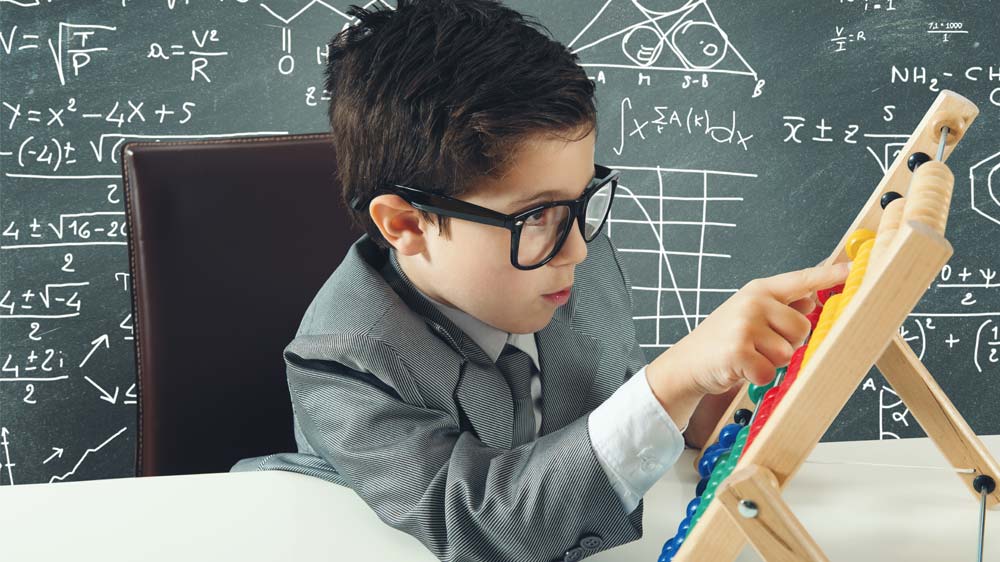 They help children put into practice what they know and develop new skills. Therefore, when a child has problems with executive functions, they have a hard time with mathematics, even if they understand it.
They help children put into practice what they know and develop new skills. Therefore, when a child has problems with executive functions, they have a hard time with mathematics, even if they understand it.
Listed below are the problems they usually face.
1. Do homework quickly and incorrectly
Some children with executive function problems may be impulsive or impatient. They do their homework quickly and somehow. When it comes to math, children need to understand the task well, but children with executive function problems will most likely not read the problem and think about what they need to do, they immediately jump into the solution.
For example, a child may assume that the problem is solved by addition, because it was so yesterday. Hurrying to start, he does not notice that in today's problem in all the examples there is a minus sign, not a plus sign. So he gets everything wrong.
2. Having difficulty putting new rules into practice
Learning new things requires finding new solutions to new problems.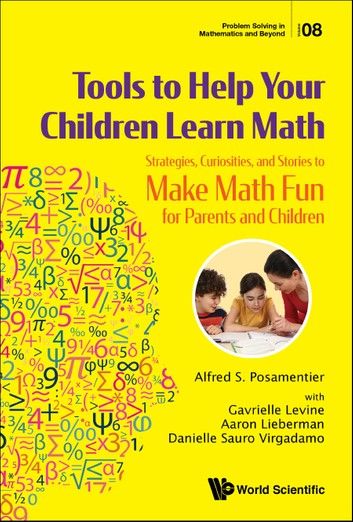 This requires a flexible mind, as well as stopping and thinking before acting. But children with executive function problems often get stuck on what they already know. As a result, they find it hard to step back to come up with a different solution to a problem.
This requires a flexible mind, as well as stopping and thinking before acting. But children with executive function problems often get stuck on what they already know. As a result, they find it hard to step back to come up with a different solution to a problem.
For example, when a child is learning about fractions, he will insist that ¼ is greater than ½ because he knows that 4 is greater than 2. However, in this case, the larger the denominator, the smaller the fraction. To find out which fraction is larger, he needs to understand this system, learn a new rule.
3. Answer without thinking
Some children with executive function problems solve problems based on experience. Instead of assessing each situation consciously, they give the answer automatically. When it comes to math, they may ignore key information in a problem and have difficulty writing equations because of this.
Suppose a child solves addition problems. 3 + 3 is 6, so he answers. Then he sees 3 - 3 and also writes 6 in the answer. It's not that he doesn't know how to subtract, but he sees 3 and 3 and answers the first thing that comes to his mind.
Then he sees 3 - 3 and also writes 6 in the answer. It's not that he doesn't know how to subtract, but he sees 3 and 3 and answers the first thing that comes to his mind.
4. Getting lost in the middle of complex math problems
Working memory plays an important role in solving complex math problems. Known information learned earlier (for example, a formula, an answer from a previous problem, an example of an exercise from a textbook) can help solve a new problem, but children with poor working memory are easily lost in building the right actions.
Here is an example. Dividing in a column, the child forgets that he must lower the remainder after subtraction. He can't remember what to do next and gives up or comes up with the wrong answer.
Also, students often have to show how they solve problems. To do this, they use a draft, which shows step by step how they came to this decision. But children with executive function problems are disorganized.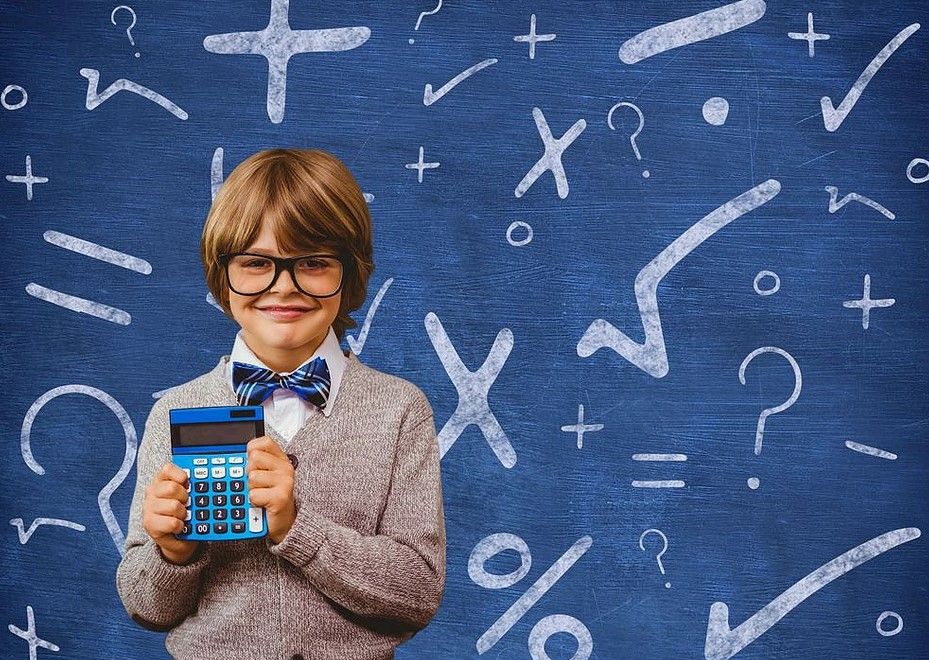 They paint the information on a piece of paper randomly, which confuses not only the teacher, but also themselves.
They paint the information on a piece of paper randomly, which confuses not only the teacher, but also themselves.
5. Not aware of their mistakes
Children need to be aware of their development and their achievements. Children with executive function problems cannot analyze their work. It simply cannot occur to them that the answer does not make sense and they need to find their mistake or ask for help.
Suppose such a child finishes his math test early. Despite the fact that he has extra time, he does not check the work for errors - he does not see the point in this, as he is sure that he did everything right.
How can you help?
If your child's performance problems stand in the way of learning math, there are a variety of ways to help them overcome them.
Start by teaching him to read the problem before you start solving it. Have him underline questions and highlight important points (including plus and minus signs). He must evaluate whether he knows how to solve the problem and whether he needs help. Let him ask himself questions like “how is this task similar and how is it different from the previous one?”.
He must evaluate whether he knows how to solve the problem and whether he needs help. Let him ask himself questions like “how is this task similar and how is it different from the previous one?”.
Help your child create their own list of things to look out for before submitting work for review. Teach him to independently check his work and identify errors.
One of the most effective tools for developing executive functions is the Fast ForWord online methodology. This technique works at the root of the problems associated with impaired development of the executive and cognitive functions, and thanks to this, quickly and permanently eliminates them.
Help your child with difficult math homework:
Here's what to remember when helping your child with difficult math homework:
-
For starters, not understanding something is very nerve-wracking. Support the child and stop all the negativity that arises in the process of work.

-
Ask the child to show examples of the problem. For example, a similar problem they solved in class, or an example from a textbook that comes with the correct answer.
-
If your child has not found an example problem, try to find help on the Internet. Your child's textbook has headings or some keywords that can be used to find articles or examples of problems on the Internet. Try several sites, they probably describe in detail how to solve such problems.
-
After you find an example of a problem, ask the child how the teacher solved it. Having a solved example before their eyes, the child can remember how the teacher solved the problem.
-
Use the sample problem to see how to solve it step by step. Write down each step that your child remembers while doing the first task together. This will remind your child that math is a process. By writing down your child's reasoning, you'll create a list that the child can give to the teacher to show that they tried even if they didn't succeed.
Using this list, the teacher can explain exactly where the child went wrong so that in the future he can solve this problem.
What should you avoid when helping your child with math homework?
Here's what not to do if your child asks you for help with math homework:
-
Don't start with questions like "What did your teacher tell you to do?" If your child remembered what the teacher told him, he probably would not ask you for help.
-
Don't contact the teacher right away. Children who have difficulty learning or concentrating easily give up and get angry when things don't work out, but it's important to show them to try to find a way out of a situation before asking a teacher for help.
-
Don't limit yourself to a note like "my child didn't do his homework because he didn't understand it." Provide the teacher with information about what exactly the child did not understand.
This will make it easier to find the gap and fill it.
Pins
-
Mathematics is a process. Explore this process with your child.
-
By giving your child examples of similar problems, you will help him solve difficult homework.
-
When helping a child solve a problem, take notes, this will help to analyze the problem and find what the child is having difficulty with.
-
If the recorded process helped the child solve the problem, great! If not, these notes can be shown to the teacher, who can help find the mistake.
Source
Math ☀ Early Childhood Development ☀ Your Child Development Plan
Content
- Why teach mathematics
- from what age and how to train
- Mathematical learning lines
- Arithmetic
- and numbers
- Addition
- Logica
Why learn mathematics
“Mathematics should be taught later, because it puts the mind in order.” M.V. Lomonosov
Mathematics is a unique subject. It is indispensable for the development of children:
- logical thinking;
- memory;
- speech;
- imaginations.
Participates in the formation of perseverance, patience, creative abilities of the individual. Teaches analysis and synthesis, planning one's actions, the most accurate presentation of thoughts, the ability to substantiate an existing point of view. Helps to introduce preschool children to the world around them.
Knowledge of mathematical content is necessary for a child for successful social adaptation, as well as for orientation in the increasingly developing information and technological processes in society.
At what age and how to teach? Preschool children are very fond of asking questions, especially the question “why?” becomes a favorite. They try to understand the structure of a thing, begin to establish the cause and effect of any events occurring around. These questions and skills are very useful not only for general development, but also for learning. Therefore, from the age of 5-6, it is already possible to actively teach them mathematics. It happens that a child of a younger age (3-4 years) is also interested in the subject. In this case, you do not need to wait until they are 5-6 years old to start classes.
Acquaintance with numbers can be started from the age of 3 Follow the interests of your preschooler, listen to him, try to keep his natural natural interest in the subject. Your efforts will be rewarded. At the same time, in no case should one “impose” on children the need to study the subject, because you can achieve the opposite effect - unwillingness to learn, lack of interest.
The main activity of preschoolers is the game, so when learning, you should use all the variety of its possibilities. You should not strive to conduct full-fledged classes with the child, as in a kindergarten or center. Your priority should be completely different forms: walks, excursions, games with natural materials (water, sand), constructors, joint household chores, reading and acquaintance with elements of folklore (counters, tongue twisters), board games, situational games (shop , train) - in general, everything that your fantasy, imagination, life experience will tell you.
Mathematical game "Fish" - interesting learningAdvice to parents: by the time of entering the first grade, your child should master the application of mathematics knowledge in practical activities that are important for him: games, experiments, everyday life.
![]()
Meaningful lines of mathematical education
Teachers and methodologists traditionally distinguish four content lines as the basis for the development of preschoolers in mathematics:
- arithmetic;
- geometry;
- values;
- logic.
Arithmetic
Numbers and numbers
The arithmetic line includes, first of all, the study of numbers and numbers. The child must understand that learning to count is necessary. Help him with this (first up to 10, then up to 20). You can teach children to count using any objects and their images: cubes, plates, steps, toys, products, pictures, etc. Simultaneously with the oral account, the baby needs to be introduced to the graphic representation of numbers. The method of associations, as well as poetic forms, can help with this.
For example, “two” looks like a swan's neck, “four” looks like a chair turned upside down, “eight” looks like two rings, etc. If you wish, you can come up with your own original associations in “co-authorship” with the child.
For a better assimilation of the graphic design of numbers, you can prepare coloring books and copybooks for preschoolers with tasks for tracing numbers, and then teach them to write them on their own. But at the same time, remember that the written spelling of numbers in the first grade may differ from your idea (depending on the chosen training program), so children should be taught the “printed” images of numbers, and not their uppercase version.
Memory games with numbersAdvice to parents: it is important to teach your child to count forward and backward to 20, the concepts of “preceding”, “next” number, as well as counting in tens to 100.
![]()
Comparisons
The next step is to teach preschoolers to compare numbers. First, we do this with the help of objects of the same type, then we learn the signs: ?, ?, =, +, -. After that, you can offer tasks with numbers for comparison (greater than, less than, equal to). This is an extremely important stage in the mathematical development of a preschool child. First we compare, and then only apply in the record.
More or less must be studied both in quantity and in size of objectsAddition and subtraction
The basics of mathematics are operations on numbers: addition and subtraction. Initially, addition training is carried out using objects or their images. The child should be able to count the items used (buttons, cubes, etc.) Perhaps the child will count on his fingers - this is not a problem, later he will learn to count “in his mind”. A number tape or a regular ruler is also suitable for developing addition skills. On the ruler, show how to move along the number line to the right for addition, to the left for subtraction.
Teach your baby gradually: first, we learn to add one, then two (this is one and one more), etc.
Figurative teaching of additionAfter practicing addition, introduce the concept of "subtraction" in the same way. When your child learns the processes of addition and subtraction well orally, you can offer him to solve examples, and later - problems for addition and subtraction. Moreover, you and your baby can come up with tasks in turn.
All sorts of colorings of mathematical content become a great help in the process of development. Pay attention to the tasks: draw by numbers, color the picture, solving examples.
Math learning coloring pagesGeometry
In the geometric line of mathematics for preschoolers, the main content is based around the study of flat geometric shapes.
Lines and segments:
- straight and curved;
- intersecting and non-intersecting;
- broken line, closed, open;
- segment, arc.
Shapes:
- circle;
- oval;
- triangle;
- rectangle;
- square;
- diamond;
- polygon.
Introduce children to figures not only with the help of the image on paper, but also with the help of household items: a plate, a book, a notebook, a hot stand, etc. In addition, you can draw drawings with your child using geometric shapes, and also turn them into any objects (for example, you can draw a face, pancake, sun, nesting dolls from a circle). It is also helpful for their development.
Geometry Montessori develops logic and spatial thinkingAdvice to parents: it is necessary not only to introduce children to geometric shapes, but also to teach children how to draw them.
Also in the geometric content of teaching mathematics is the development of the ability to divide figures into equal parts.
Values
When selecting the content of mathematical education for preschoolers, the following concepts should be included in the line of values:
- length;
- width;
- height;
- time;
- mass.
When studying all these categories, it is also necessary to proceed from simple to complex, while not forgetting about comparisons. By school, the child must be taught to compare objects according to their characteristics: wide - narrow, thick - thin, high - low, large - small, deep - small, far - close, heavy - light, long - short. On orientation in all these concepts, the beginning of mathematical education in the first grade will be built. You can measure the length, width, height of objects not only with a ruler, but also with other improvised means.
Educational games can be downloaded from the Internet In addition, it is extremely important to teach children to navigate on a sheet of paper. They should understand the categories: top, bottom, right and left sides. For this purpose, mathematical dictations are carried out on a sheet in a cell. For example, put a dot, from it draw two cells to the right, then three down, two to the right, four up, etc. As a result, a conceived picture is obtained. The baby listens to instructions and follows them. Another time, he may already dictate to you, you will comply.
In the category "time" it is necessary to teach a preschooler to name the seasons, months, parts of the day. But it is possible to teach how to determine the time by a clock with arrows, but not necessarily.
Advice to parents: teach preschoolers to compare objects and pictures for different reasons, and to find common and different things in them.
Logic
Developing the mathematical abilities of preschoolers, use a variety of logic games. They train not only the basics of logical, but also creative thinking, they teach to find non-standard solutions. And above all, they help to stimulate interest in learning. They also develop concentration of attention, since the task may contain a catch. When solving logical problems with a child, take your time, let him understand the condition and offer his own solution.

